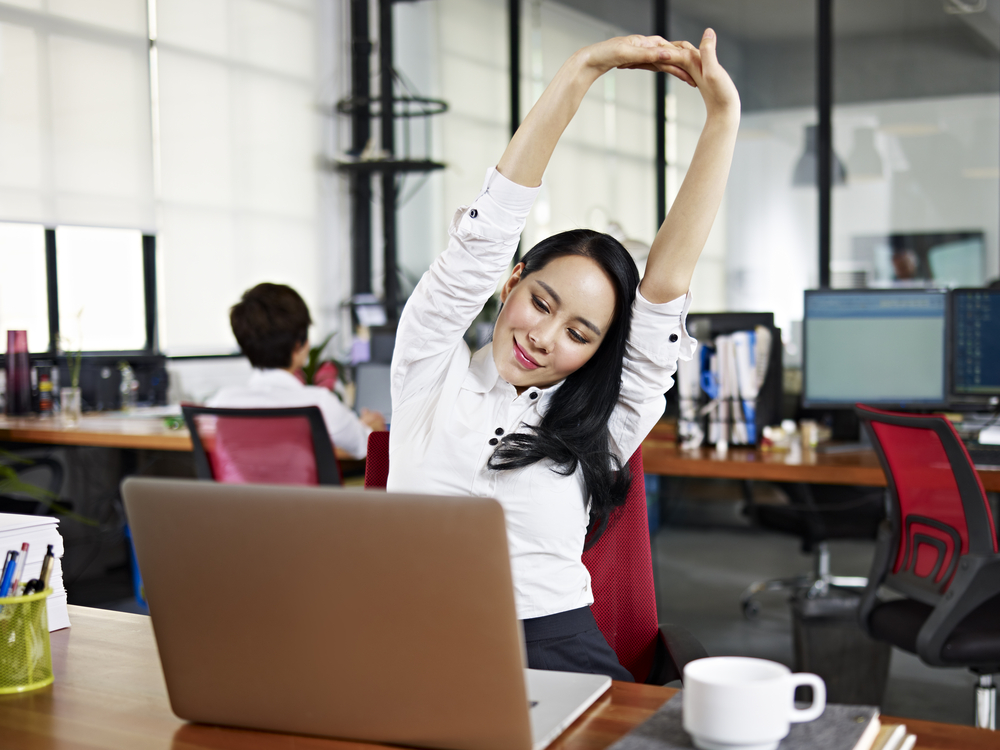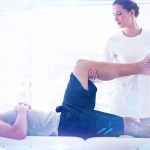10 Lower Back Pain Exercises You Can Do At Your Office Desk
One of the biggest hazards of today’s work environment is that a large part of the population spends far too much time sitting at their desks, and most of them are hunched over a computer. This results in muscle tension and pain, especially in the lower back area.
Lower back problems can produce a variety of symptoms, and they are not necessarily felt in the back itself. The pain can be sharp, a dull ache, or a burning or tingling sensation. It can also make your legs or feet feel weak. This is because back pain can influence other areas of the body.
However, Bentall Physiotherapy prepared 10 lower back exercises to relieve both the pain and the strain. The best of them all is to stretch and release taut muscles in the back. And that’s quite possible to do without leaving your desk area.
Get Yourself Moving
Have a ball at work: Many people in the know have decided to change their office chairs for large exercise balls. They have done this with good reason – balancing on the ball makes most of the muscles in the back work while you do. And it especially engages the very important core muscles in an effort to keep you from toppling very unprofessionally to the floor. It’s best not to try to do the full nine to five on the ball on the first day. Because that round chair really does give the muscles a good workout, start with short sessions.
Do the twist: A torso twist will help to release the whole back if you let it. Breathe along with the exercise, starting by inhaling. Then, as you breathe out, turn to the right and grab the back of your chair with your left hand, twisting your torso around as far as you can in the process. Hold this position as long as you can, while avoiding the curious glance from the woman at the desk behind you or flashing her a smile. Then slowly turn back to your original position facing your desk, and start the process of twisting to the right.
Get your spine on a roll: Sit up straight with your feet on the floor and your hands hanging free at your sides. Tilt your pelvis forward and gradually roll down, starting with the top of your head and curling forward gently, focussing on each of your spinal vertebrae as you curl and bring your head down between your knees. Don’t forget to breathe.
Fold and lift: Another exercise which works by folding forward, this one involves a little lift at the end. With your feet flat in front of you and slightly apart, fold forward and reach for the floor. Breathing in deeply to the bottom of your belly, rise up a little, and then as you breathe out, tuck your nose between your knees.
Give your legs a hug: Hugs are good for the soul, and the right ones are good for your back. So why not give your legs a hug in acknowledgement of how they and your feet carry you around every day of your life? Sit on the edge of your chair and put your feet together on the floor. Lean over and bring your chest down to your knees. Clasp your hands behind your legs, left hand to right wrist, and right hand to the left, reaching as far up the forearm as you can manage. Release your grasp and repeat the exercise a couple of times.
Why stop at the legs? If you enjoy the leg hug, try hugging your whole body. In this instance, you place your hands on opposite shoulders and give yourself a hug, breathing in and out to release the taut muscles.
Take a stand: Stand up and sit down several times. Rise with your arms lifted and pointing forward and drop them to your sides once you are erect. But there is a catch: Don’t use your hands to lift yourself from the chair. Also, don’t do it while you are listening to a client.
Yoga at Your Desk

Who says you have to do yoga on a mat? There are some poses that can be adapted to fit the confines of the office, and done while you are sitting or standing at your desk. While the results might include some strange looks from your colleagues, they will also help you protect your back.
Planking: Stand up and place your hands on the edge of your desk shoulder width apart. Step back so that your feet are directly in line with your hips. Take five to ten slow and deep breaths, holding each slightly before breathing out again.
Chaturanga Push-ups: Adopting the same position as you did for planking, add in a couple of push ups by bending your elbows to an angle of 90 degrees. Inhale while bending the elbows and exhale while straightening your arms to lift you back to the original position.
Crescent moon: Lift your arms over your head and stretch your fingers as wide apart as you can. Then lean to the right while breathing deeply two or three times, before repeating the exercise, but leaning to the other side.
The advantages of doing these exercises while at your desk far outweigh the down side of having to explain to your colleagues that you haven’t lost your mind. In fact, when they see the positive results you are enjoying, they may decide to join you. Loosening the muscles and relieving the tension in your body will improve your focus and productivity, and help you avoid the pain and physical deterioration which too often results from office work.





